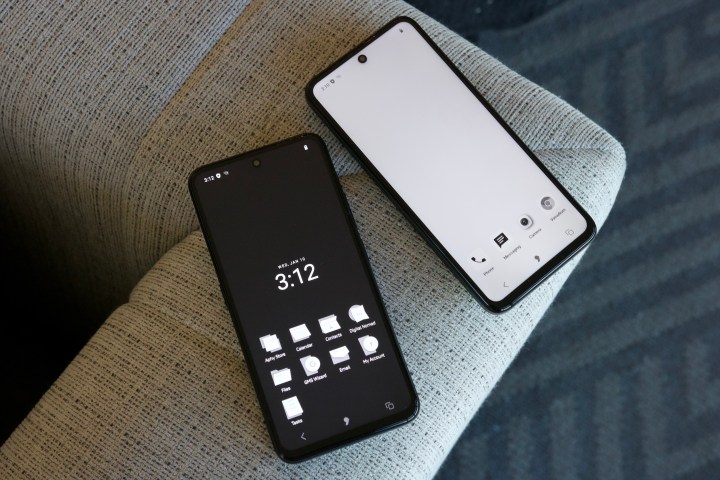
When you buy a phone today, your first decision is to decide which operating system you want: Android or iOS. We’ve seen other platforms come and go over the years, from Windows Phone to Palm OS, but Android and iOS remain your two sole choices in 2024.
One of the last things I saw at CES 2024 earlier this month was a smartphone operating system that’s trying to be that third choice between Android and iOS. It’s called Apostrophy OS (also referred to as AphyOS), and I got to play around with it while also chatting with Apostrophy CEO Steve Cistulli to learn about the could-be Android and iOS alternative.
What is Apostrophy OS?
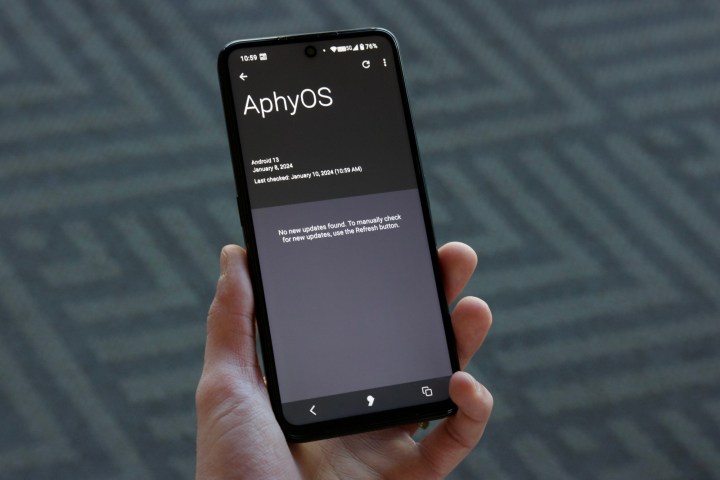
In the company’s own words, Apostrophy OS is “a bespoke OS-level implementation integrated, in partnership, with an Original Equipment Manufacturer (OEM) smartphone.” In simpler terms, it’s an operating system that
Apostrophy OS is also based on Android at its core (specifically,
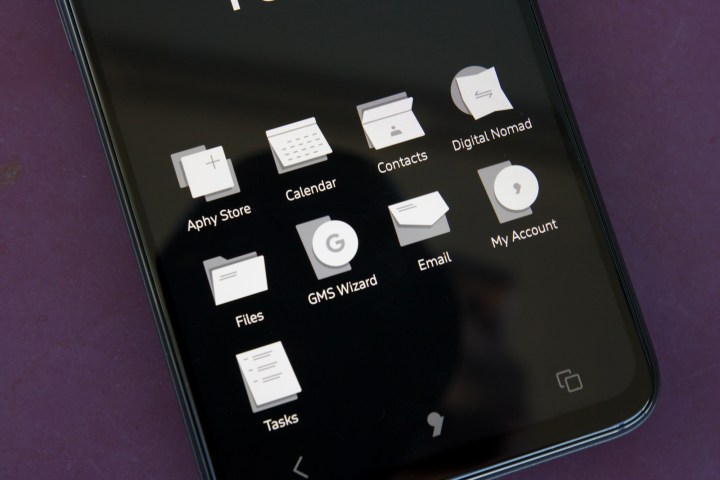
Starting from the home screen, your main home page on Apostrophy OS is called the “Domus.” It’s a grayscale page with shortcuts for the Aphy Store (Apostrophy’s own app store), your calendar, contacts, Apostrophy’s VPN service, your files, email, and more. You can’t customize anything on this page, and everything you do here is run through Apostrophy’s servers for maximum security.
However, swiping to the left takes you to the “Piazza.” The Piazza can be customized like any other Android home screen, and you can run whatever apps you want here. But it’s still designed to be more secure, as each app you run in the Piazza is sandboxed and kept separate from your other apps there.
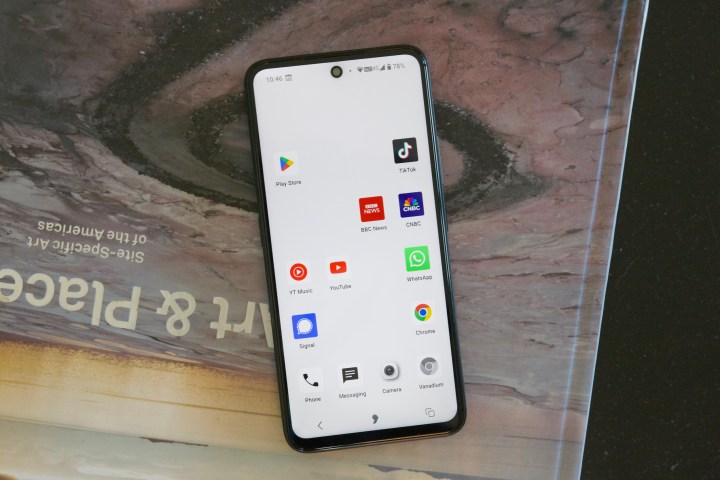
This means you can still use any Android app you’d like — be it WhatsApp, YouTube, Instagram, etc. — but the app is running as its own, individual thing without access to your data beyond the walls of the application. The Google Play Store isn’t installed by default on Apostrophy OS, but you can easily install it in a matter of minutes. Cistulli walked me through the process himself, and it’s literally just a matter of entering your Google account information and accepting some privacy terms.
As Cistulli explained to me, “I have a relationship with WhatsApp. I know the information that WhatsApp is taking and that Meta will be using. That’s now the singular relationship. I don’t have to worry about Google being involved in that relationship anymore.”
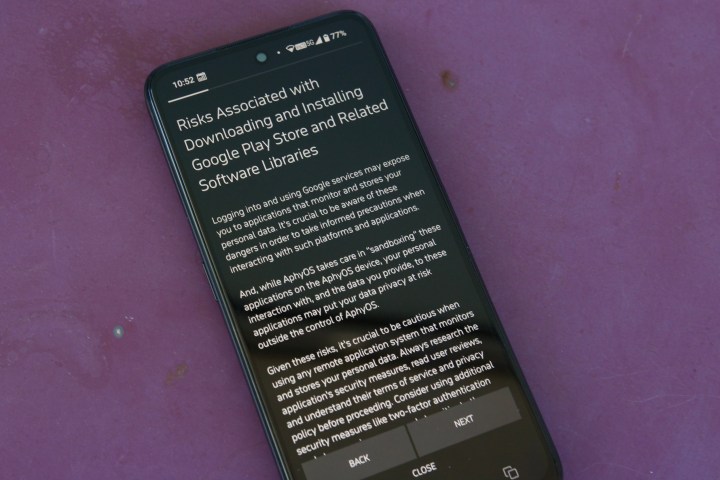
The same thing applies to other apps, including Google’s. As Cistulli told me:
“I like YouTube and YouTube Music, and I use those quite often. That’s my relationship with YouTube and with Google. Does it mean that they have access to my Gmail and everything else?.” If you aren’t using Gmail or other Google services, the answer is “no.”
A VPN, email account, and more — for a price
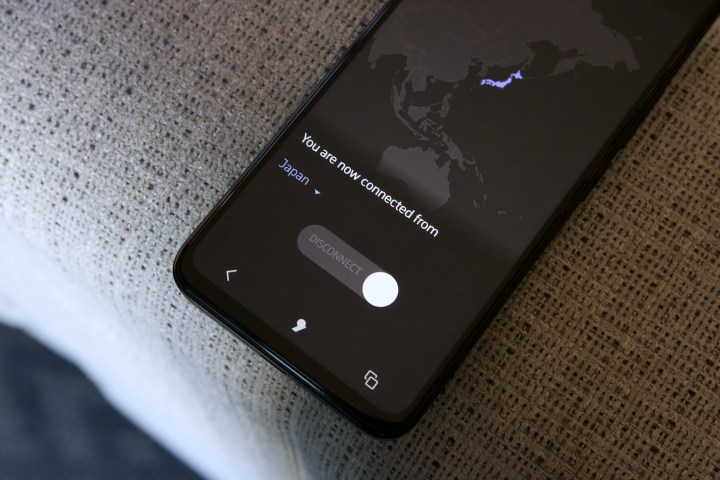
But a secure way to use Android apps is only part of the Apostrophy OS experience. The other big thing Apostrophy offers is a suite of apps and services provided directly by the company.
The first of those is called Digital Nomad, and it’s essentially a VPN baked into the operating system. You can turn it on anytime and change your location from the U.S., Germany, or Japan. So long as it’s enabled, everything you do on your Apostrophy OS smartphone is hidden behind the
What I found more interesting is a feature called “Ledger.” When you press and hold on any application, you can tap the Ledger icon. Once you do, you’re taken to a new page with Data Privacy and Carbon Reduction dials specific to that app.
When you move these dials, you’re essentially changing the various permissions that the app has on your phone. However, instead of having to manually change each permission yourself without a clear explanation of what it’s doing, that’s all handled automatically by Apostrophy OS when you move these dials. Want an application to have free range to all of the permissions it’s requesting? Crank the Data Privacy slider to 1. Want to allow some necessary permissions but block others? Maybe turn the dial to 4.
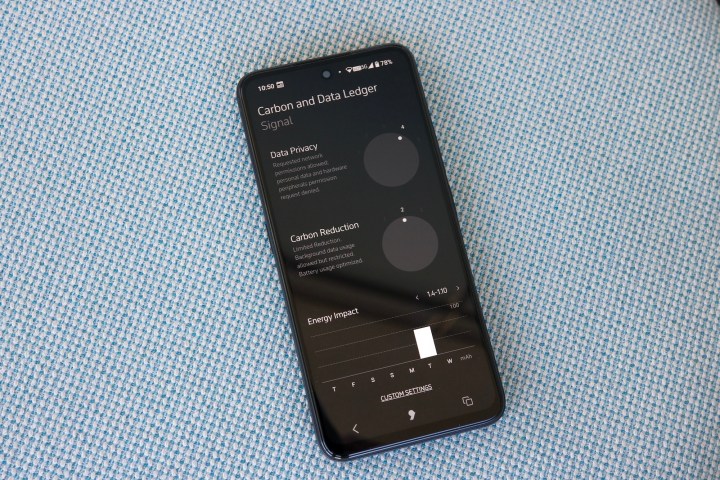
Each number on the dial clearly explains what you’re changing and what permissions are being allowed/denied. The Carbon Reduction slider works the same way but focuses on limiting your phone’s computing power. Moving this dial to 2, for example, allows an app to have limited background data usage with optimized battery usage. Changing it to 3 outright denies background data use from that app and restricts its battery use.
Cistulli broke it down for me like this:
“The majority of people don’t want to go through and talk about 200 different types of permissions and accesses. What we’ve done is we’ve categorized them into privacy and energy impact, and then giving you these really simple, really cool dials, along with your energy impact per application.”
Along with the VPN and Ledger services, Apostrophy OS gives you your Apostrophy account with a new email address, calendar, contacts, tasks app, and 5GB of cloud storage space. All of this comes at a cost of around $15/month, and one year is included for free with the purchase of any Apostrophy OS phone.
The hardware powering Apostrophy OS
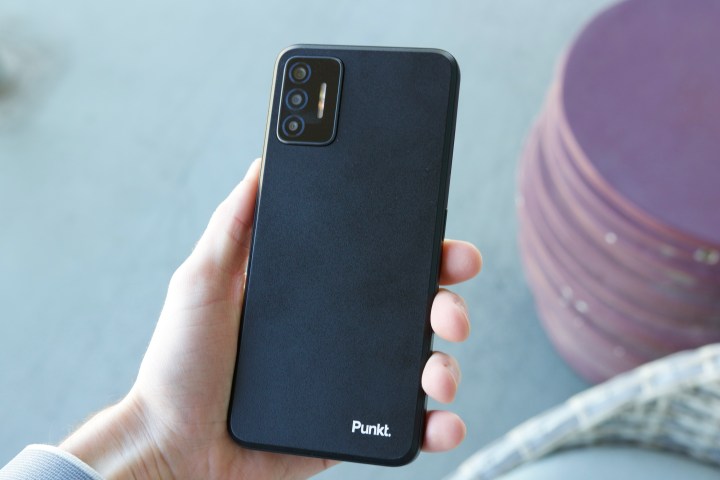
That’s the Apostrophy OS software — but what about the hardware? The phone I used — and the only Apostrophy OS handset at the moment — is the Punkt MC02.
It’s a fairly standard Android phone. It has a 6.67-inch IPS screen with a 2400 x 1080 resolution and a 60Hz refresh rate. You get a MediaTek Dimensity 900 processor, 6GB of RAM, 128GB of expandable storage, a 64MP main camera with an 8MP ultrawide camera, and a 2MP macro camera. It’ll set you back $749.
The phone felt well-constructed during my hands-on time, but those specs for $749 could be a tough sell. The good news? More Apostrophy OS phones are coming. Cistulli says Apostrophy already has “another OEM on board” and that the company will have “a third [OEM] by the end of the year.”
The Android alternative we’ve been waiting for?
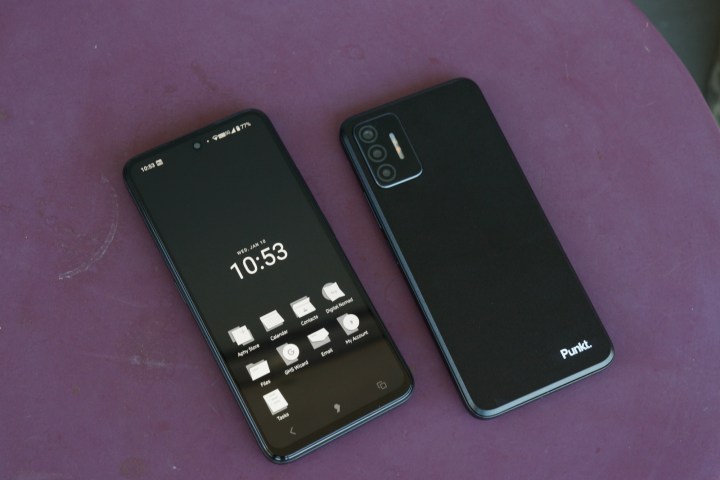
Is Apostrophy OS the third mobile operating system we’ve been waiting for in the Android vs. iOS world? The heavy privacy focus and the required subscription make it a decidedly niche option, but there’s certainly something here.
Apostrophy has done a good job at making its software easy to operate and understand, and that’s an accomplishment that shouldn’t be overlooked. The privacy tools make sense, it all works very similarly to other Android phones, and you can still use any app you already use on your Galaxy S23 or Google Pixel 8. As Cistulli put it simply, “Why would you choose another
There are obvious hurdles Apostrophy needs to overcome. It needs to get Apostrophy OS running on more devices, get those devices onto store shelves and in front of people’s eyes, and make a convincing argument that it’s worth buying a phone with a monthly subscription. Those are all much easier said than done, but Apostrophy seems up for the challenge. And I’m now eager to see how the company does it.
Editors' Recommendations
- Nomad’s new iPhone case and Apple Watch band may be its coolest yet
- Android 15 might add a new way to charge your gadgets
- Here’s how Apple could change your iPhone forever
- There’s a big problem with the iPhone’s Photos app
- Google just released the first Android 15 beta. Here’s what’s new





